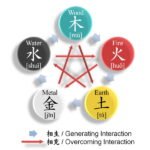Korean Air and Asiana’s aircraft (Courtesy of Yonhap)
South Korea’s six listed airline companies have posted worsening profitability in the second quarter, plagued by higher jet fuel costs and the dollar’s strength against the Korean won.
Of six airliners whose shares are traded on the Korean stock market, three swung to losses in the April-June period, industry data showed on Friday.
The six firms – Korean Air Lines Co., Asiana Airlines Inc., Jeju Air Co., T’way Air Co., Jin Air Co. and Air Busan Co. – all posted decent sales growth, however, propelled by growing travel demand following the end of the COVID-19 pandemic.
The six airline companies posted 7.06 trillion won ($5.2 billion) in combined sales in the second quarter, up 13.5% from the year-earlier period.
Korean Air, the country’s top full-service carrier, saw its second-quarter sales rise 14% on-year to a record 4.02 trillion won. Asiana, another full-service carrier, posted 1.74 trillion won in sales – its quarterly record high.
Jeju Air, the country’s largest low-cost carrier (LCC), recorded an on-year increase of 15.7% to 427.9 billion on in sales.
Three other LCCs – T’way, Jin Air and Air Busan – saw double-digit sales growth in the second quarter.
Jeju Air, Jin Air, Air Busan and T’way (clockwise) are South Korea’s leading budget carriers
PROFITABILITY WORSENS
The six carriers’ profitability has all worsened with three going into the red.
Korean Air, Jin Air and Air Busan posted double-digit percentage declines in their operating profits while Asiana, Jeju Air and T’way posted operating losses.
Analysts said the companies were all negatively affected by higher fuel costs, which usually account for about 30% of their operating costs.
The average Singapore jet fuel spot price, called the Mean of Platt’s Singapore Kerosene (MOPS), stood at $102 per barrel in the second quarter, up 7.4% from $95 a year earlier. Compared with the pre-pandemic year of 2019, the MOPS rose 25.9%.
MOPS is the standard for Korean airline firms’ international passenger fuel surcharge.
The companies were also hurt by higher dollar-won exchange rates as they settled jet fuel and aircraft maintenance costs in dollars.
Korean low-cost carriers’ desks at the Incheon International Airport
The average foreign exchange rate was 1,371 won per dollar in the second quarter, meaning an additional 60 won is required to buy the greenback from a year ago, and 200 won more compared with the second quarter of 2019.
Airline companies also spent more to buy new aircraft to meet growing travel demand post-pandemic, which in turn worsened their profitability on financial sheets.
Jeju Air, which turned to a second-quarter loss for the first time in seven quarters, bought two new airplanes this year.
Earlier this month, Jeju Air Chief Executive Kim E-bae said the company is looking for an M&A target to cement its leadership in the domestic budget carrier market.
T’way, operated by Tway Holdings Inc., swung to an operating loss for the first time in six quarters, as it prepared for long-haul routes, including a European route.
“The companies are spending heavily to promote their services amid growing economic uncertainty such as a slowdown and higher exchange rates,” said an industry official.
By Jung-Eun Shin
newyearis@hankyung.com
In-Soo Nam edited this article.














